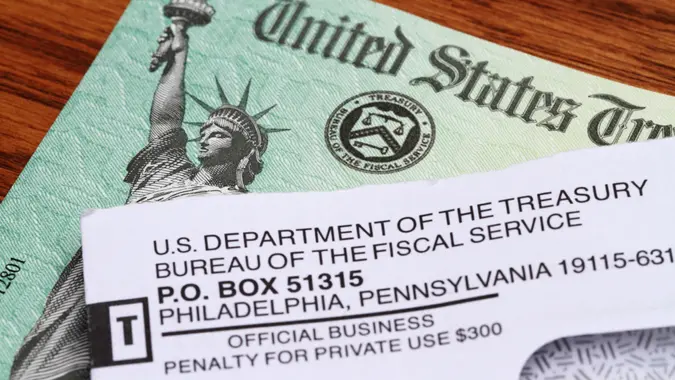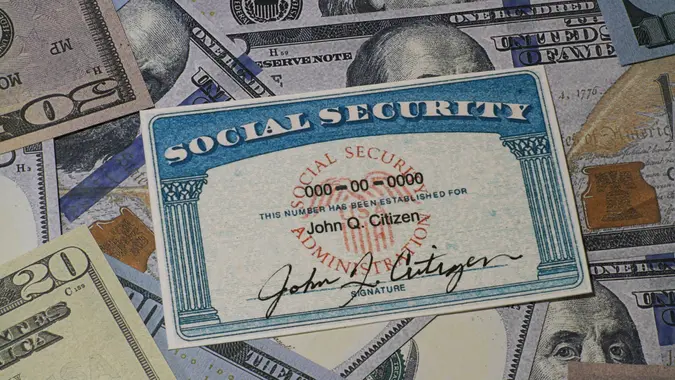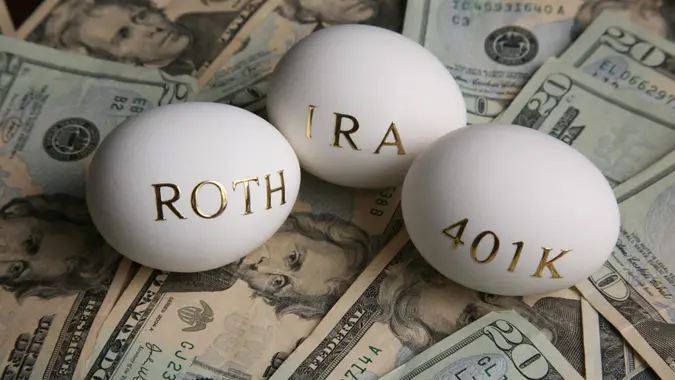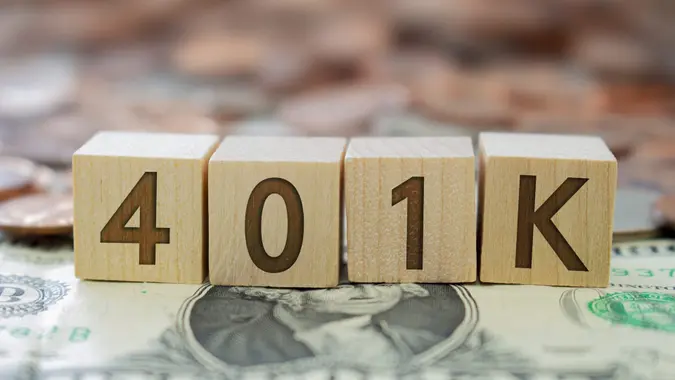Borrow Money From Your 401(k) Due to COVID-19? Here’s How To Pay Yourself Back in a Timely Manner

Commitment to Our Readers
GOBankingRates' editorial team is committed to bringing you unbiased reviews and information. We use data-driven methodologies to evaluate financial products and services - our reviews and ratings are not influenced by advertisers. You can read more about our editorial guidelines and our products and services review methodology.

20 Years
Helping You Live Richer

Reviewed
by Experts

Trusted by
Millions of Readers
If you’re like many Americans, you borrowed from your 401(k) plan during the coronavirus pandemic. The U.S. government actually made it easier to obtain such loans, raising the limits to $100,000 or 100% of your balance vs. the typical limits of $50,000 or 50% of your account value. Now that vaccine distribution is widespread and the economy is reopening, you might be in the position to start paying that loan back. Here are some suggestions for how to pay yourself back in a timely manner and why you should try to return that money to your 401(k) as soon as possible.
Be Aware: Here’s How Much You Should Have in Your 401(k) Account, Based on Your AgeHelpful: 27 Best Strategies To Get the Most Out of Your 401(k)
Set Up Monthly Withdrawals From Your Paycheck
The easiest and most efficient way to pay back your 401(k) plan is to have your employer take monthly withdrawals from your paycheck. Under this system, you’ll continue to make regular 401(k) contributions like you did before you borrowed against your account, but that money will go toward paying off your loan balance rather than being true contributions. One of the neat features of a 401(k) loan is that you pay back both principal and interest to yourself, so your balance could grow back rapidly if you set up monthly payments. If you can afford it, you might want to make larger contributions than normal so that you’re effectively both paying off your loan and making your normal 401(k) plan contributions.
Check Out: Chick-fil-A and 23 More Companies With Surprisingly Great 401(k) Plans
Make Additional Payments From Your Free Cash Flow
If you get a raise, a tax refund or any other type of “bonus” money, put it toward your 401(k) loan. Although interest rates on 401(k) loans are typically low — and you make interest payments back into your own account — every day that your retirement money isn’t in your account generating interest or capital gains makes it harder for you to reach your retirement savings goals. Consider your 401(k) loan to be a regular liability, like your monthly mortgage, car loan or credit card bills, rather than your retirement account. That could give you the additional incentive you need to start knocking down your 401(k) loan balance in a more aggressive manner.
Watch Out: 30 Greatest Threats to Your RetirementSee: Hidden Obstacles That Keep People From Retirement
Think Twice Before Changing Your Job
Typically, if you leave an employer and you have an outstanding 401(k) loan, it becomes due in full immediately. Although it’s up to individual plan sponsors whether or not they want to enforce this type of policy, it is commonplace. In other words, if you take a different job and still owe $50,000 on your 401(k) plan, you should generally expect to either pay your outstanding loan balance back in full right away or treat it as a distribution. As a distribution, you’ll face both a 10% early withdrawal penalty and income tax at your marginal rate. If you have a sizable loan, you might even get kicked up into a higher tax bracket. Additionally, you’ll no longer have that money in your 401(k) plan, which could be devastating for your long-term nest egg. In short, think long and hard before you switch jobs while you still have an outstanding 401(k) loan, unless you have the available cash to pay it back in full.
More From GOBankingRates
- What Money Topics Do You Want Covered: Ask the Financially Savvy Female
- 5 Things Most Americans Don’t Know About Social Security
- 20 Home Renovations That Will Hurt Your Home’s Value
- What Income Level Is Considered Middle Class in Your State?
Last updated: Aug. 3, 2021
 Written by
Written by  Edited by
Edited by 

























